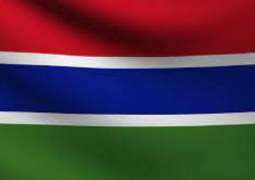
YWDE Strategy is to outline measures for the enhancement of youth and women development and empowerment through the use of ICTs.
The YWDE Strategy-2024 is covering the period 2021 – 2024.
The unprecedented changes in ICTs are having profound impacts on the lives of the youth and women.
These are, among others, in the forms of political and social developments all triggering changes in the social fabric of the country.
The greater part of the impact is on the challenges to the traditional power structures as the advocacy is for a new social
contract between the state and society.
The change is reflective of connectivity and access to internet. A greater part of the country’s Internet users is below the age of 25.
Safeguarding the rights of young people and investing in their quality education, decent work and employment opportunities, effective livelihood skills, and access to health and services and participation are essential to achieving development and a sustainable future.
ICTs impact on all these creating an access to about 39.1% percent of the population are youth aged 15-24.
The Strategy is based on the conviction that youth and women’s
development and empowerment advance the nation’s competitiveness at both regional and international levels.
The core objective is to strengthen the status of youth and women through a comprehensive approach that takes into consideration the different complimenting roles both play in national development.
This strategy is responsive to the current changes in technology and the corresponding benefits it brings for both youth and women.
It is partly premised on Goal 5 of the UN SDGs as the measures are for the use of ICTs to achieve gender equality, eliminating all forms of discrimination, harmful practices and violence against women and girls.
Further the strategy is informed by international best practices in its
development, with a special emphasis on what obtains in Ecowas
countries with a similar development context to that of The Gambia.
Its formulation is based on a consultative process with stakeholders from the government, civil society, and the private sector. Some key reports have been considered as well as the developments at the international level especially with regards to the SDGs and the ECOWAS and AU
commitments on youth and women development and empowerment.
By 2016, The Gambia has a population of 1,922,950, out of which 915,357 are male and 1,007,593 female.
This represents 47.6% male and 52.4% female.
The number of 1,057,467 live in the urban areas and 865,483 live in the rural areas.
With an average household size of 6.9, there is an annual
population increase of 3.5%.
The population growth from 1, 857, 181 in 2013 to 1, 922, 950 people in 2015-2016 represents an increase of 3.5 percent increase with a
residential distribution of 55.0 percent urban and 45.0 rural.





